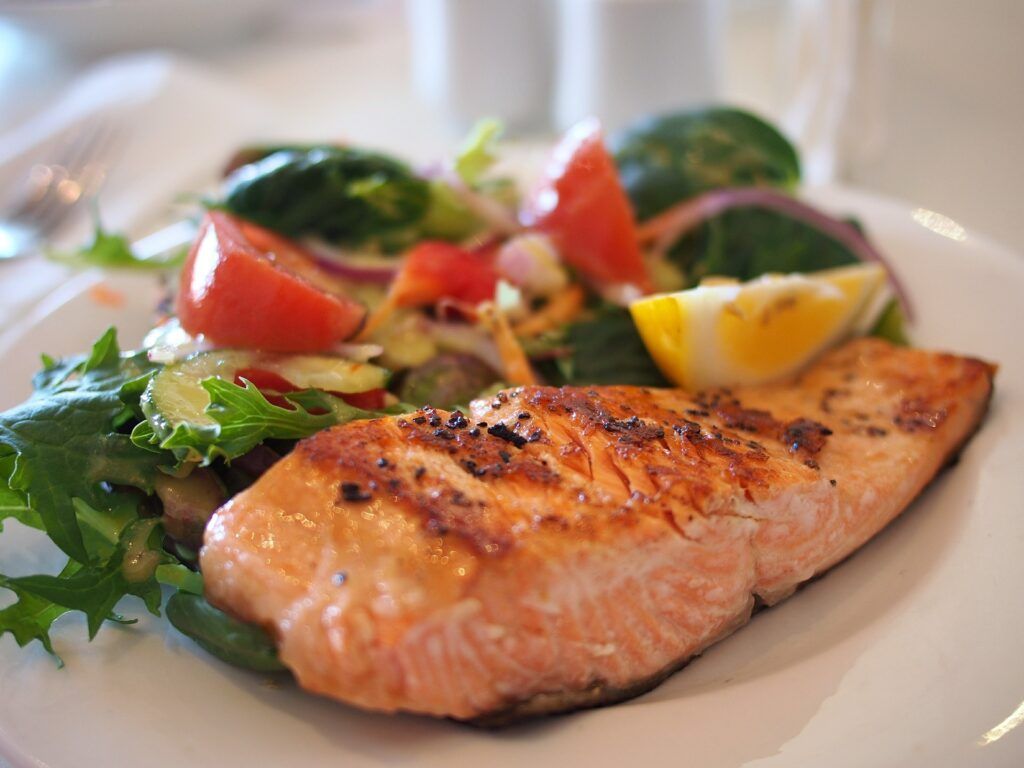Acute pain has long been understood as beneficial throughout evolution as it enables us to both identify and prevent encounters with harmful stimuli. However, once pain progresses to a chronic state it can cause a variety of issues for the individual and society as a whole. Up to 30% of the Western population is estimated to experience some sort of chronic pain, which is much higher than any other chronic disease. Research in the neuroscience field has greatly advanced our understanding of pain, including the role of central sensitization (an amplification of neural signaling within the central nervous system that elicits pain hypersensitivity) in the generation and amplification of pain. As a result, more emphasis is given to dietary factors as a possible perpetuating factor for chronic pain. This article discusses the findings from a June 2020 study in the Journal of Expert Opinion on Therapeutic Targets which reviewed the neuro-immune mechanisms and dietary factors linking nutritional intake to central nervous system sensitization and chronic pain. An expert panel of researchers and clinicians contributed to the data collection and identified nutrition as an innovative way of targeting central nervous system sensitization and pain. The consensus has an impact on the fields of physical therapy, nutrition and integrative pain care and rehabilitation.

The Role of Diet, Glial Cells, and Central Sensitization
Increased activation of glial cells in the brain and spinal cord has been shown in patients with many types of chronic pain, including nonspecific low back pain [1] and fibromyalgia [2]. Aberrant glial activity can cause and maintain central sensitization by releasing neurotrophic factors and pro-inflammatory cytokines such as tumor necrosis factor-α (TNF-α). This induces long-term potentiation (LTP), which increases the efficiency of synapses between neurons and ultimately leads to pain sensitization in the central nervous system [3]. A typical Western diet (high fat/high sugar) may play a role in glial activation. Hyper-energetic dietary patterns are related to oxidative stress, cell necrosis, and tissue damage throughout the body, which can activate Toll-like receptors. When activated, certain Toll-like receptors trigger pro-inflammatory immune signaling in the central nervous system, which includes glial activation.
While hyper-energetic diets tend to increase glial cell activation, they also induce higher levels of inflammation throughout the body. This can cause the generation of pro-inflammatory cytokines that cross the blood-brain barrier and enter the central nervous system [4].

How the Vagus Nerve Communicates Neuroinflammation and the Gut-Brain Axis
The vagus nerve, which connects the brain with the gut in what is known as the gut-brain axis, is also impacted by high-fat, high carbohydrate, and hyper-energetic diets. Pro-inflammatory mediators such as cytokines are detected by vagal afferent nerves, which then communicate information about nutritional intake to the brain. The central nervous response to these pro-inflammatory cytokines is microglial activation and neuroinflammation [5, 6]. Furthermore, neuroinflammation can weaken the blood-brain and blood-spinal cord barriers. This creates a positive feedback loop that has negative consequences of increasing severity.
In fact, nutritional intake is not the only reason why many patients may develop central sensitization. Research shows that other factors such as sleep deprivation or fragmentation play akey role in glial activation, and that when sleep fragmentation and poor diet are combined the effects are compounded [7]. Mechanisms linking nutrition and other factors to central sensitization (modified from [8])
Dr. Tatta’s simple and effective pain assessment tools. Quickly and easily assess pain so you can develop actionable solutions in less time.
Potential Therapeutic Solutions Employing Diet and Nutrition for Pain
In animals, a hypo-energetic diet (60% of the energy intake of their counterparts) was found to inhibit neuroinflammation and glial activation, which consequently decreased central sensitization [9]. Moreover, the same dietary pattern also decreased nociceptive effects on post-operative pain in non-obese rats. However, fasting was not considered a viable treatment option for patients with chronic pain as the effects are immediate, but there are longer-lasting negative consequences.
Similarly, 20 weeks of a standard American diet (high sugar and fat) proved to increase microglial activation and pro-inflammatory mediators after inflammatory pain induction. Furthermore, recovery times were significantly slower for rats on this diet compared to those on a regular or anti-inflammatory diet [10,11].

Based on the possible role of the gut microbiome in mediating nutritional-induced neuroinflammation and therefore central sensitization, the gut microbiota may be another innovative target for therapy. Gut dysbiosis was observed in patients with primary sclerosing cholangitis and/or inflammatory bowel disease, and microbial loads were inversely correlated with intestinal and systemic inflammation markers [12].
Comparable results have also been obtained through human studies. Results from one pilot study suggest that a low-carbohydrate diet (but not low-fat) could provide pain relief, reduce oxidative stress, and even replace the use of opioids in patients with knee osteoarthritis [13]. Indeed, this meta-analysis and this systematic review support the role of diet and nutrition to alleviate chronic pain. Nutritional interventions for pain have demonstrated positive outcomes for those with osteoarthritis, rheumatoid arthritis, neuropathic pain, fibromyalgia, gulf war syndrome,multiple sclerosis and many other musculoskeletal conditions. In addition, combining nutritional interventions with exercise therapy was found to have a superior increase in patient quality of life as compared to exercise therapy alone. This indicates that nutritional factors play a significant role in central sensitization and the development of chronic pain, as the anti-inflammatory effects of exercise therapy are already well established.
Given the amount of evidence from preclinical and clinical studies supporting the role of nutritional factors in the sensitization of the central nervous system mediated by gut-brain interactions, it seems necessary to further evaluate this link in human studies with patients having chronic pain. In accordance with current evidence, a combination of nutritional and exercise intervention is recommended for patients with chronic pain. Additionally, adopting an anti-inflammatory diet may be a more direct way to address central sensitization and underlying neuroinflammation. With more research, the most effective targets for treatment will become more evident.
REFERENCES
- Loggia ML, Chonde DB, Akeju O, et al., Evidence for brain glial activation in chronic pain patients. Brain. 138(Pt 3): 604–615. 2015..
- Albrecht DS, Forsberg A, Sandstrom A, et al. Brain glial activation in fibromyalgia – A multi-site positron emission tomography investigation. Brain Behav Immun. 2019;75:72-83
- Gao YJ, Ji RR. Activation of JNK pathway in persistent pain. Neurosci Lett. 2008;437(3):180–183
- Du Y, Yang M, Lee S, et al. Maternal western diet causes inflammatory milk and TLR2/4-dependent neonatal toxicity. Genes Dev. 2012;26(12):1306–1311.
- de Lartigue G, de La Serre CB, Raybould HE. Vagal afferent neurons in high fat diet-induced obesity; intestinal microflora, gut inflammation and cholecystokinin. Physiol Behav. 2011;105(1):100–105..
- Watkins LR, Maier SF. Implications of immune-to-brain communication for sickness and pain. Proc Natl Acad Sci U S A. 1999;96 (14):7710–7713..
- Ho JM, Ducich NH, Nguyen NK, et al. Acute sleep disruption- and high-fat diet-induced hypothalamic inflammation are not related to glucose tolerance in mice. Neurobiol Sleep Circadian Rhythms. 2018;4:1–9.
- Nijs J, Elma O, Yilmaz ST, et al. Nutritional neurobiology and central nervous system sensitisation: missing link in a comprehensive treatment for chronic pain? Br J Anaesth. 2019;123(5):539–543..
- Liu Y, Ni Y, Zhang W, et al. Anti-nociceptive effects of caloric restriction on neuropathic painin rats involves silent information regulator 1. Br J Anaesth. 2018;120(4):807–817.
- Totsch SK, Quinn TL, Strath LJ, et al. The impact of the Standard American Diet in rats: effects on behavior, physiology and recovery from inflammatory injury. Scand J Pain. 2017;17:316–324.
- Totsch SK, Meir RY, Quinn TL, et al. Effects of a Standard American Diet and an anti-inflammatory diet in male and female mice. Eur J Pain. 2018;22(7):1203–1213…
- Vieira-Silva S, Sabino J, Valles-Colomer M, et al. Quantitative microbiome profiling disentangles inflammation- and bile duct obstruction-associated microbiota alterations across PSC/IBD diagnoses. Nat Microbiol. 2019;4(11):1826–1831..
- Strath LJ, Jones CD, Philip George A, et al. The effect of low-carbohydrate and low-fat diets on pain in individuals with knee osteoarthritis. Pain Med. 2020;21(1):150-160.



